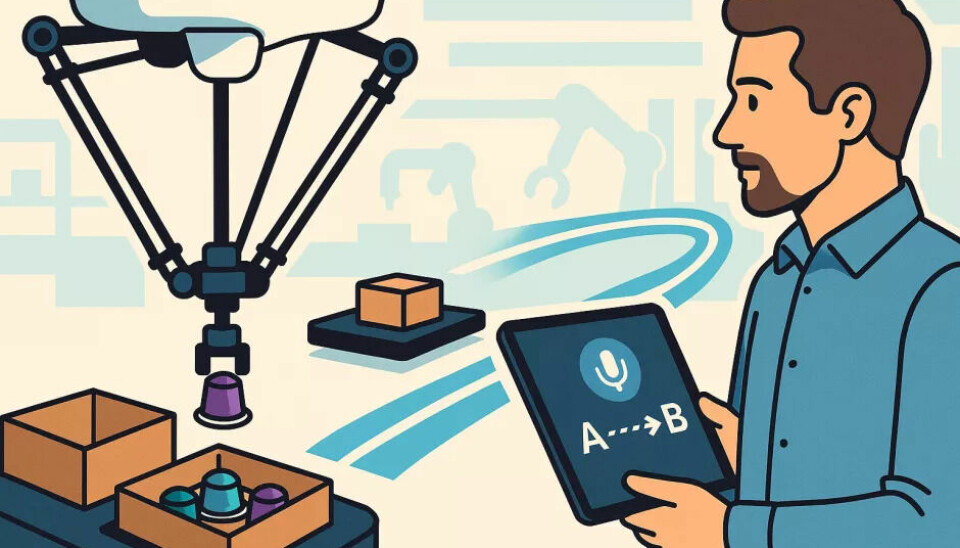Interview about robotics trends in the packaging process
“It's about breaking up isolated solutions“

At the packaging days jointly organized by Sick and Siemens on July 1 and 2, 2025, automation and robotics were the focus. neue verpackung was on site and had the opportunity to interview one of the speakers, Christian Gehrhardt, head of business development robotics and flexible conveyance at Siemens.
Mr. Gehrhardt, according to IFR, Germany is the largest robotics market in Europe and ranks fourth worldwide in robot density. With so much know-how in the field: Why is robotics still a topic that needs to be listed under the heading "made easy" in the lecture program?

Christian Gehrhardt: It is true that robotics is highly developed here compared to the rest of the world. But despite the impressive numbers, no real standards have been established here yet; instead, we still see mainly isolated solutions and proprietary systems in robotics in practice. Especially at trade fairs like Automatica, it becomes clear how many different user interfaces and apps there are. What is missing is a connecting element. Packaging machine builders often face the challenge of having to integrate robot kinematics from different manufacturers within their machines - each with its own engineering systems. Our goal is to reduce this complexity and make robotics truly easy to integrate. We achieve this, among other things, by implementing robot functions such as path interpolation directly into the motion controller, the Simatic. In addition, the customer has the option to integrate complete robot systems via the open SRCI standard.
Are there specific areas along the packaging line where there is currently a strong investment in robotics?
Gehrhardt: Historically, inline robotics within the machine has been and still is a crucial factor for productivity. Today, we are seeing more investments in upstream and downstream processes - that is, in the loading and unloading of machines. There is still a lot of manual work involved, and this is precisely where the greatest automation potential lies.
Does this also affect intralogistics?
Gehrhardt: Absolutely. Intralogistics is an intensive field that is increasingly being automated - from the automatic loading and unloading of trucks to pallet transport. However, there are still many areas where manual intervention is necessary. The challenge is to automate these processes reliably and in 24/7 operation.
What are the main drivers for your customers to invest in robotics - skills shortage, cost pressure, or quality requirements?
Gehrhardt: The weighting varies from case to case - but it is actually always a combination of all three points. In the pharmaceutical industry, for example, it is about high quality requirements in cleanrooms and avoiding manual interventions. At the same time, there is a shortage of skilled workers for repetitive tasks around the machine. Automation not only offers a solution for the shortage of skilled workers, but also for consistent quality in repetitive activities and process reliability that does not depend on an operator who can have good, but also sometimes less good days.
How has the role of mechatronic systems in packaging machine construction fundamentally changed in the last ten years?
Gehrhardt: Two aspects are crucial: technological maturity and price development. Technologies such as linear transport systems are now standard in packaging machine construction. Planar transport systems are a more recent example, which are currently being introduced primarily in the pharmaceutical industry - but I am convinced that they will soon play a larger role in other industries such as the food industry.
How does Siemens specifically support companies in integrating robotics and transport systems?
Gehrhardt: We work with best-in-class partners and ensure that their systems can be seamlessly integrated into our automation platform. The machine builder benefits from being able to integrate and program robotic kinematics or transport systems through a familiar engineering environment - without having to deal with different systems.
Do you have a concrete example from practice?
Gehrhardt: A good example is certainly coffee capsule production - a booming market with many players. Here, capsules coming from the primary packaging must be sorted and packaged into different secondary packages. This is done fully automatically today with delta robots and corresponding gripper tools that place the capsules into the appropriate packages. The variety of packaging forms makes this particularly challenging.
As this is becoming an increasingly important point in times of skilled labor shortages: How intuitive is the operation of such systems for the end user?
Gehrhardt: Compared to the early days, operation has already become significantly easier - mostly through classic HMI interfaces. In the future, it will become even more intuitive: app-based operation, AI-supported assistance systems, and open platforms are the next step. Our goal must be that the user does not notice that complex AI algorithms are working in the background - for example, they should be able to simply say for the pathfinding of a planar transport system: "This should go from A to B, under the following conditions" - and the system does the rest.
Will voice control also play a role?
Gehrhardt: Yes, definitely. At the Hannover Messe, we introduced our "Industrial Copilot" - a system that supports both engineering and operations. In the future, users should also be able to retrieve information via voice on how to properly respond to a machine error message or find support in creating and explaining automation codes. The potential here is enormous.
We are currently at an event jointly offered by Sick and Siemens. How do machine builders benefit from collaborations like the one between your two companies?
Gehrhardt: That brings me back to the beginning of our conversation: it's about breaking up isolated solutions and creating an open ecosystem. Today, machine builders need interoperable components - from sensors to robotics to control systems. Our collaboration with Sick shows how to seamlessly integrate these components and enable easy integration for the customer.
Finally, the obligatory look into the future: what do you think robotics in packaging machine construction will look like in 10 to 15 years?
Gehrhardt: Industrial robots integrated directly into the line will certainly continue to play a central role - especially in machines where high cycle rates are involved. At the same time, we will see more small, flexible robots in upstream and downstream processes. They can take on tasks that are still done manually today. The key will be how well these systems can be integrated into existing platforms - because only then will the machine builder remain competitive.
